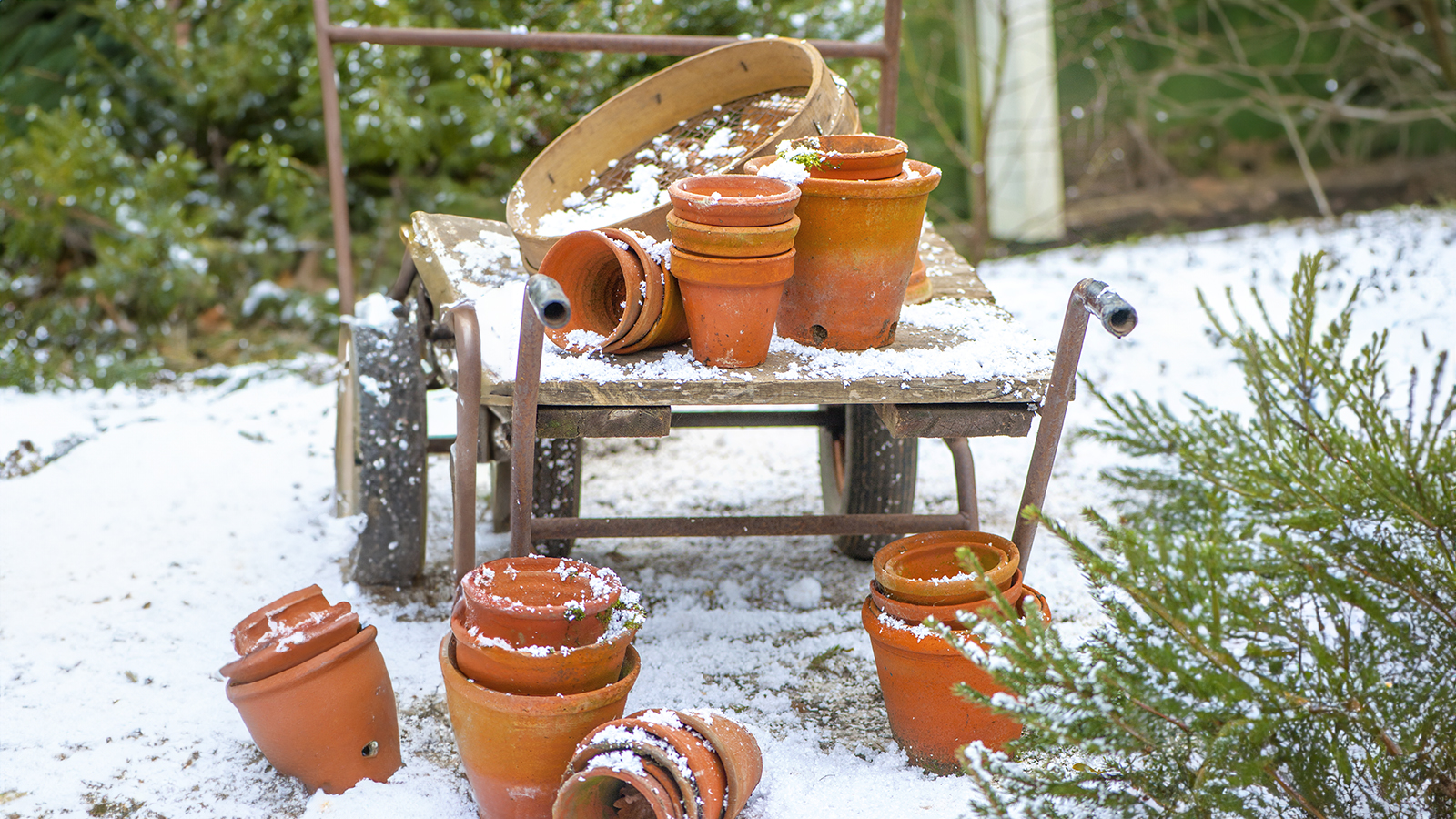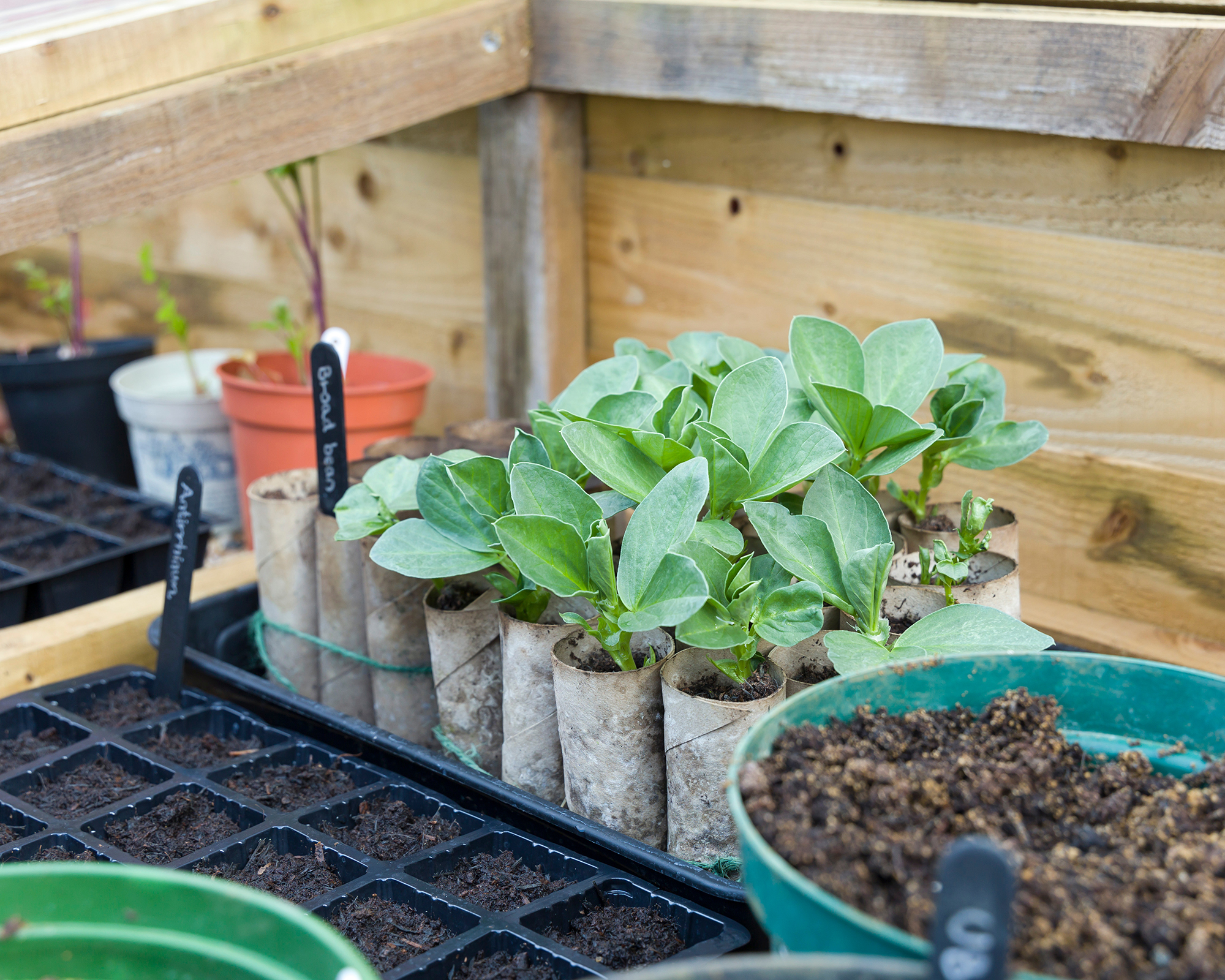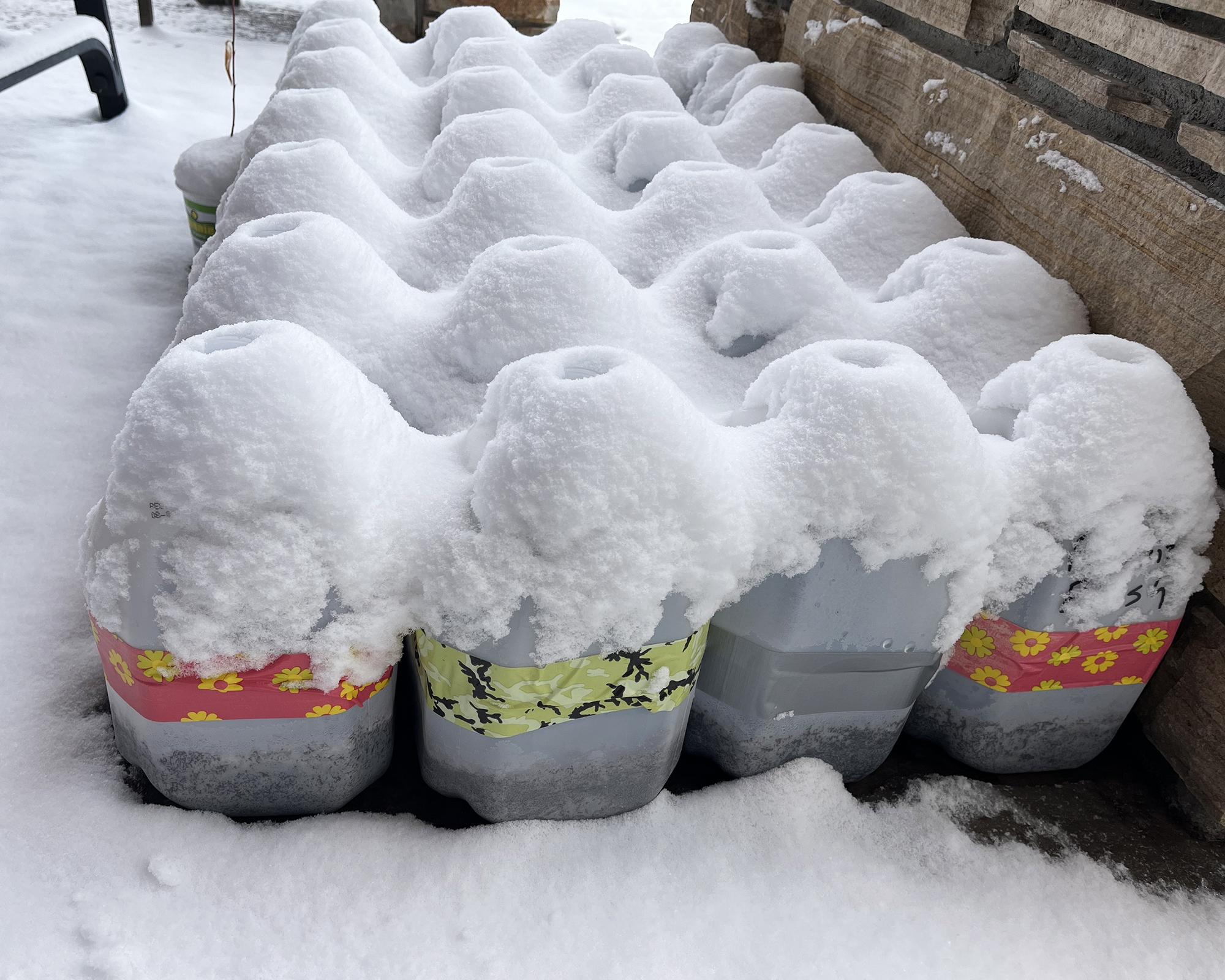Ready To Start Growing? Try Winter Sowing Seeds In Your Garden This Weekend
It may be cold outside, but you can get a head start on your garden by winter sowing seeds. Come spring, you'll reap the rewards with superb blooms and veggies.

Melanie Griffiths

In the dead of winter, it can feel like forever until the start of spring planting season. So, why not get a head start on your flower beds and vegetable garden by winter sowing seeds outside? While not all seeds can be successfully sown in the coldest months, certain plants will thrive when started at this time
If you haven’t tried planting seeds in winter, you may be surprised to learn that you can sow certain seeds in pots and let them sit outdoors all season, even if your climate experiences more than its fair share of freezing temperatures, rain, and snow. However, you shouldn't direct sow seeds into the ground now – you will need to protect the young seedlings under a cover, such as a cold frame, small DIY greenhouse, cloche, or hoop house.
Starting seeds indoors is a better option if you want to extend the growing season to include more tender plants, but not all growers have room for lots of seed trays in the house. Even if you do have room, perhaps you don't get enough light and don’t want to invest in grow lights. So it pays to know which seeds are compatible with winter sowing.
Benefits of Winter Sowing Seeds
There are numerous benefits to winter sowing seeds outside:
- Winter-sown seeds tend to be more resilient in the long run than seeds started indoors in the spring.
- Sowing early can give you a jump start on more hardy crops, and extend the bloom season of many flowers.
- Winter sowing also gets rid of the need to stratify seeds that require a chilling period. The cold weather does it for you and then prompts germination as temperatures warm and days lengthen.

What You Need to Start
Sowing seeds in the winter is simple and only requires a few things. First, you will need a cold frame or mini greenhouse. You don't need to spend much money as you can repurpose recyclable clear to opaque plastic containers. Try starting seeds in milk jugs or use large soda bottles to make a plastic bottle greenhouse. All you need to do is save them once empty after grocery trips.
Along with this, you will need a sharp knife, awl, or other hole-punching device to make drainage holes, and a marker to label your greenhouse.
Unless using an all-in-one mini greenhouse, you will need some seed pots or trays. You can make DIY seed starter pots or invest in seedling trays – the Gardening Know How Shop stocks a range of high-quality seedling trays and lids that will last for years and get your seeds off to the best possible start.
Sign up for the Gardening Know How newsletter today and receive a free copy of our e-book "How to Grow Delicious Tomatoes".
You will also require a potting mix to plant your seeds. The choice is yours: either make your own blend or use a good quality, well-draining potting soil or soilless seed-starting mix. Do not use garden soil or regular compost.
Lastly, of course, you will need seeds suitable for starting in the winter months.
Seeds That Grow in Winter
The ability to grow your own food doesn't stop in winter. Many indoor vegetables can be grown in pots or in a winter windowsill garden, but starting seeds outside in winter expands your options. Cold-weather crops like broccoli, Brussels sprouts, cabbage, cauliflower, kale, leeks, lettuce, spinach, and Swiss chard should be on your winter sowing seed list.
Native flowers like black-eyed Susan, evening primrose, liatris, lobelia, milkweed, penstemon, purple coneflowers, and more thrive in cooler winter temperatures. Annual flowers such as bachelor buttons, nasturtiums, pansies, violas, and snapdragons are other seeds to plant in winter.
Perennial plants like blanket flowers, calendula, delphiniums, dianthus, nicotiana, phlox, poppy, and salvia can also be started in the winter, as can most herbs.
From stunning flowers to organic vegetable and herb seeds, the Gardening Know How Shop is your go-to destination for reliable varieties with outstanding performance.

How to Sow Seeds in Winter
Before sowing winter seeds, read the seed packet information to check they are suitable for starting at this time. Avoid any tender or heat-loving plants or crops – these can be started indoors in late winter or spring.
Seed germination can’t happen for most plants in temperatures below 50°F (10°C), but your mini greenhouse or cold frame will significantly warm the soil and air.
Pick your recycled plastic container of choice. We’ll use a gallon milk jug as an example. Clean it well and poke holes in the bottom of the jug for drainage. Then simply cut almost through the center of the jug; leave a bit of the container attached to the bottom to form a hinge.
Fill the bottom half of the jug with 3 inches (8cm) of potting or soilless mix. Make sure the soil is slightly moist, not sodden. Sow the seeds according to the packet instructions.
Reattach the top with duct tape or similar. Label and date the jug and place it outside in an area of full sun that will receive rain through the top hole but that is also protected from harsh winds that can knock it over.
For more in-depth information on starting seeds, learn the ins and outs of planting your favorite varieties in our seed-starting workshop.

How to Care for Winter Seedlings
Keep an eye on the greenhouse for any sign of seedlings. When they emerge, even if it is still snowing outside, the interior of the greenhouse can get hot enough to wilt the tender shoots. You may need to open it during the day but be sure to close it in the evening.
Once temperatures have warmed in the spring, the top can definitely be removed during the day and then placed back on at night.
Thinning seedlings is necessary if they are growing too close together and are competing for space and nutrients in the soil. Simply pull or cut away the weaker seedlings to give the stronger plants more room to establish roots.
You can transplant seedlings into their final garden positions when they are about 2-3 inches (5-8cm) tall and when the danger of frost has passed.
Do You Have to Water Winter Seedlings?
You will need to occasionally water winter seedlings, but not usually early on. It is a good idea to continue to monitor the container as it may not get enough water through the hole at the top. When temperatures have warmed in the spring, you will likely need to supplement the water.
How Long Do Winter Seeds Take to Grow?
Timing varies depending upon the species and the weather but never fear, Mother Nature has things well in hand. When temperatures warm appropriately and the days lengthen, the seeds will germinate and begin to grow.
More Seed-Starting Inspiration
- Grow your most glorious garden yet with these 8 flower seeds to start in January.
- Kickstart your organic vegetable garden with the 7 best vegetables to plant in January.
- Discover when to start seeds indoors for bigger harvests and more beautiful blooms.
- Learn how to grow a windowsill full of veggies this winter, according to a top gardening expert.
- Browse the finest seedling trays in the Gardening Know How Shop, designed to create the perfect growing conditions for all your seed starts.
This article features products available from third party vendors on the Gardening Know How Shop.

Amy Grant has been gardening for 30 years and writing for 15. A professional chef and caterer, Amy's area of expertise is culinary gardening.
- Melanie GriffithsEditor in Chief
